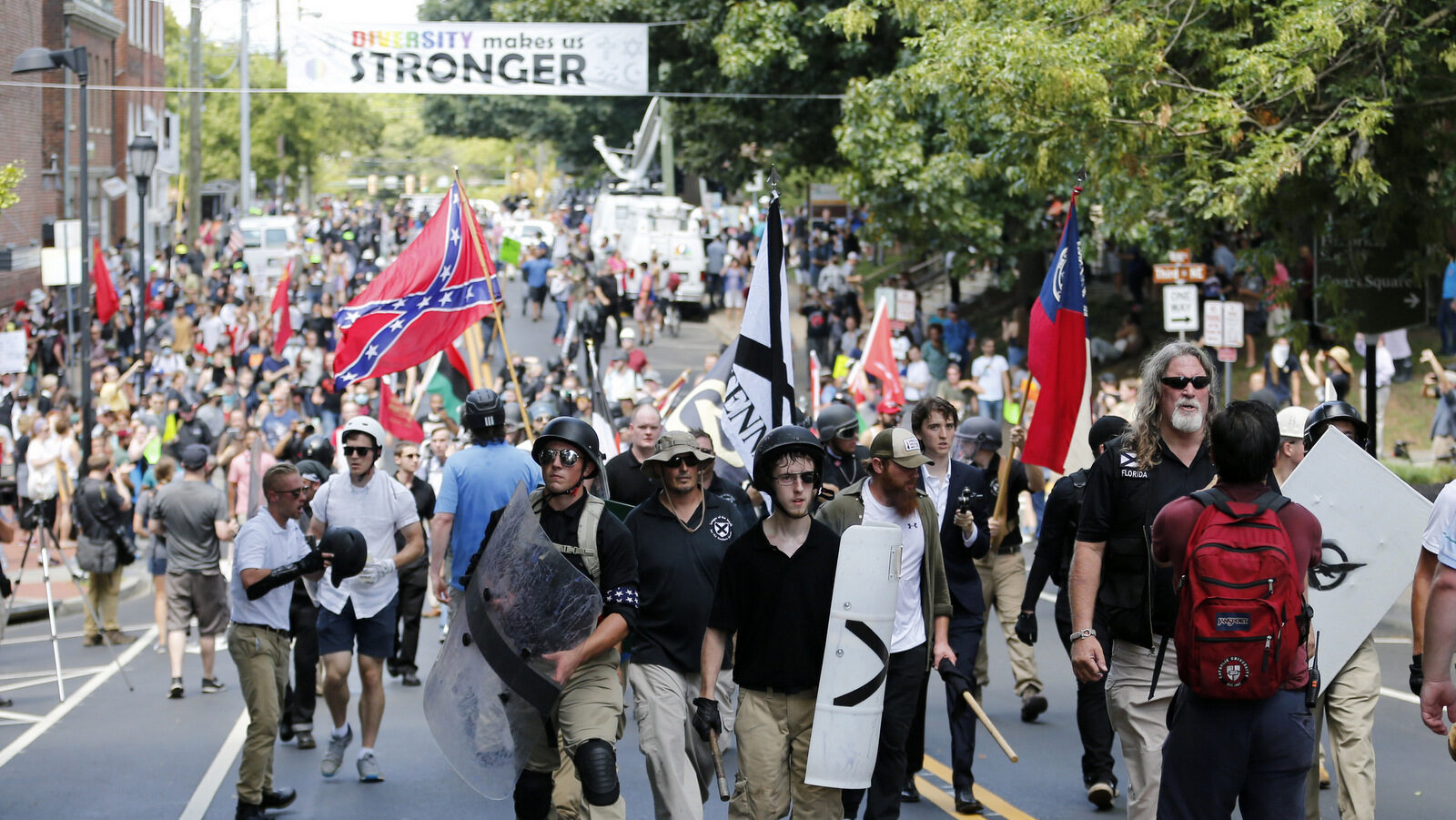The logic of ‘race as a social construct’ must be tightened and the focus sharpened. Just as it is unhelpful, to say the least, to euphemize racial slavery in continental Anglo-America as ‘the Peculiar Institution,’ instead of identifying the “White race,” itself, as the truly peculiar institution governing the life of the country after emancipation as it did in slavery times; just as it is not ‘race’ in general, that must be understood, but the ‘White race,’ in particular; so the ‘White race’ must be understood, not simply as a social construct, but as a ruling class social control formation.”
– Theodore Allen, author of The Invention of the White Race.
Theodore Allen’s The Invention of The White Race, posits three fundamental theses in understanding the impact of the system put in place after Bacon’s Rebellion:
1. The White race was invented as a ruling class social control formation in response to labor solidarity (i.e. Bacon’s Rebellion).
2. A system of racial privileges was deliberately instituted in the late 17th and 18th century by the Anglo-American elite to define and establish the “White race” and establish a system of racial oppression
3. The result was, especially, destructive for Blacks, but also harmful to European American workers as well.
Of late, this author has been confronted with voices of so-called White socialists, communists and leftists who feel it’s their duty to hush and silence Black dissent and Black outrage, regarding US racism. Yes, you can hear the refrains of “identity politics,” “divide & conquer” and “liberal” being used by these faux-allies as designations against any and all who dare speak the truth about the deep roots and long reach of American White supremacy.
What they continue to choose to ignore is a history and reality filled with White betrayal to any significant unity with people of color in this nation. It is that history and current dynamic that will be outlined here – and yes, Theodore Allen will be referenced, quite a bit, throughout this essay.
White Elite Brings Home The Bacon
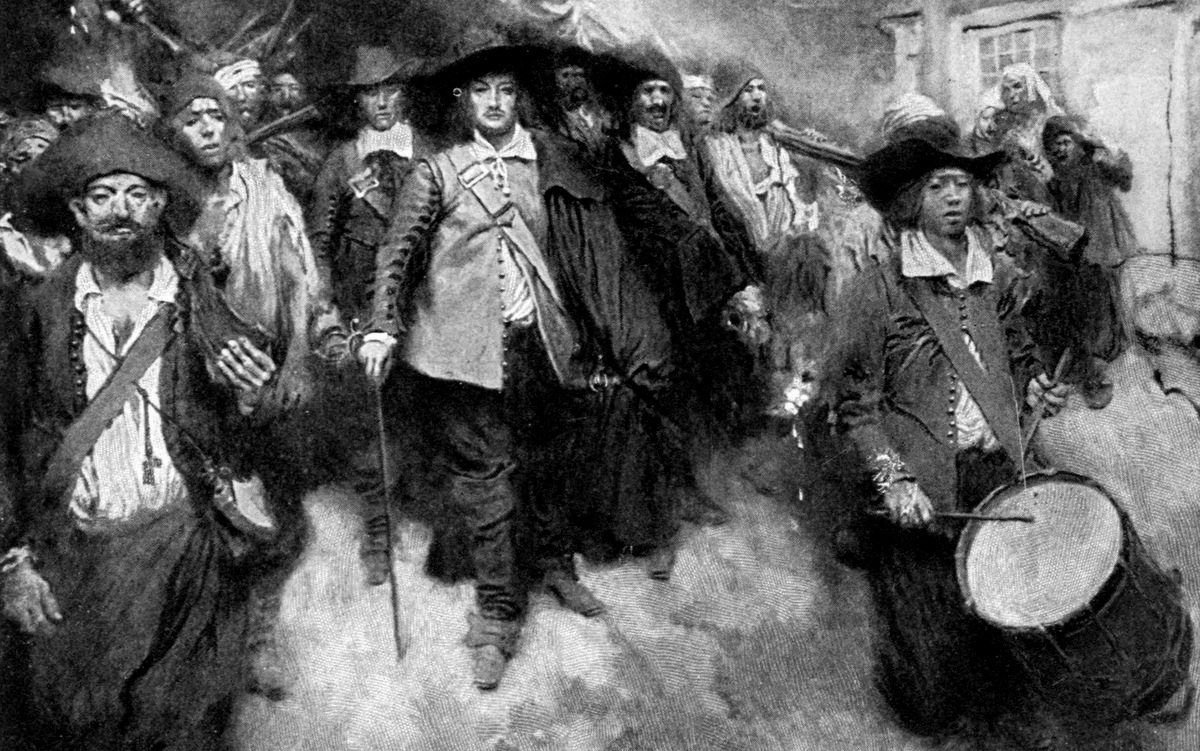
Bacon’s Rebellion was an armed rebellion in 1676 by Virginia settlers led by Nathaniel Bacon against the rule of Governor William Berkeley. This insurrection demonstrated beyond question the lack of a sufficient intermediate buffer to stand between the ruling plantation elite and the mass of the European-American and African-American laboring people, free and bond.
It began in April 1676 as a difference between the elite and the sub-elite planters over “Indian policy,” but by September it had become a civil war against the social order established by the plantation elites. When Bacon’s forces besieged, captured, and burned the colonial capital city of Jamestown and sent Governor Berkeley, scurrying into exile across Chesapeake Bay, the rebel army was composed mainly of European-American and African-American bond-laborers and freedmen who had recently received their freedom.
Although Bacon’s rebellion failed, it exposed the growing power of the colony’s lower classes. The colony’s elite devised a divide and conquer strategy which made the White lower classes the intermediate buffer and effectively regulated the African American to slavery. Even though the material comforts were minimal for poor Whites, they grabbed the White supremacy carrot with both hands.
After Bacon, in 1680, the legislature further declared that any White could kill a slave believed to be a fugitive. The same law provided the severe penalty of 30 lashes for any slave who “shall presume to lift up his hand in opposition” to ANY White. A 1691 law directed sheriffs to “kill and destroy” slaves hiding out in the woods and further guaranteed that the colony would recompense a master for the value of the dead slave. This law put the military force and the economic power of the colony behind the emerging institution of slavery.
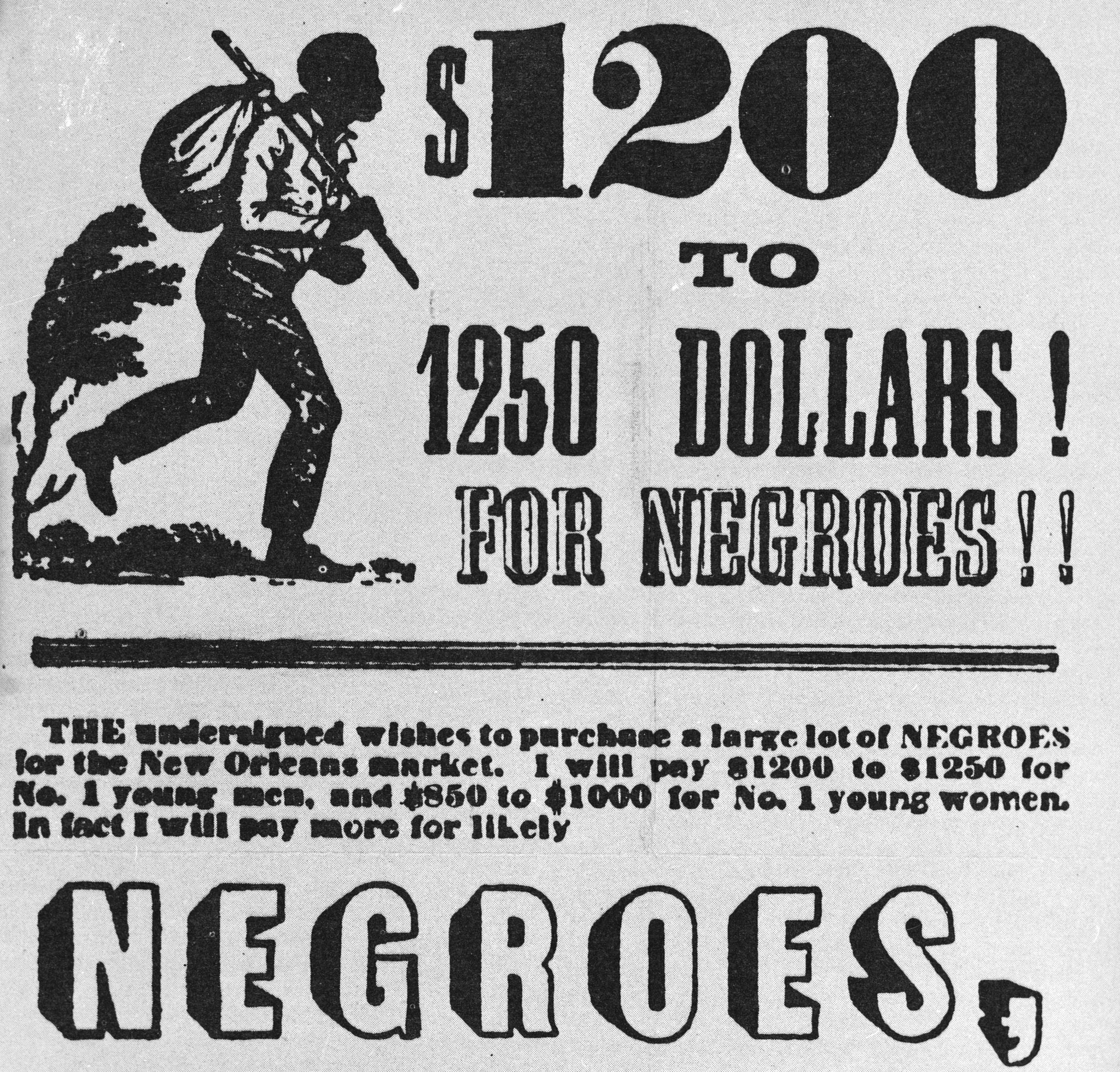
To further strengthen domination of Blacks and to create a buffer between runaway White servants and “fugitive” Black slaves, Whites would have to serve extra time to make up for the time that slaves were absent because slaves could not have any more time added to their perpetual sentence of lifetime servitude. This law was enacted in 1662, before Bacon’s Rebellion. It wasn’t heavily enforced, however, until after the failed insurrection.
This law had the practical effect of separating White indentured servants (who still made up most agricultural workers in the English colonies) from Black slaves. White workers, who frequently ran away, could no longer afford to share their plans for freedom with Blacks. This was the beginning of a conscious attempt by the leaders of Virginia and other colonies to drive a wedge between Black and White people. Once again, not by offering Blacks ANYTHING, but by punishing Whites for association with Blacks and an allegiance, by coercion or choice, to White supremacy.
This was how the “White race” was invented as the social control formation, whose distinguishing characteristic was not the participation of the owners of bond-laborers. No. What distinguishes this system of social control and made it the “White race,” was the buy in of the European-American laboring classes, non-slaveholders, self-employed small land-holders, tenants, and laborers. This arrangement compelled Governor Notley’s 1677 observation: The “men in power” had found a way to have the “common [European-American] people” agree with them in keeping down Blacks, free and bond.
This was highlighted in 1640 when a black indentured servant named John Punch was sentenced to “serve his said master or his assigns for the time of his natural Life here or elsewhere.” No white indentured servant in Virginia ever received such a sentence – but the threat, as was mentioned before, of more time being added to their sentences for aiding & abetting Black escapees, was usually more than enough to snuff out any coalition with their darker-skinned brothers and sisters.
To keep that wall between those who couldn’t dare hope for social mobility, poor/working-class Whites, and those who couldn’t dare hope for freedom – Blacks – an insidious piece of social engineering took place. A re-branding of what – once were – standard rights for citizens, was now privileges for Whites: the assumption of being free, the right to get married, the right to carry a gun, the right to read and write, the right to testify in open court & sit on a jury.
And it worked as poor and working-class Whites would figuratively, and literally, cut the throats of Blacks and other peoples of color, to hold on to the crumbs given to them by the White elite.
Sons & Daughters of Ireland Opt for American White Supremacy
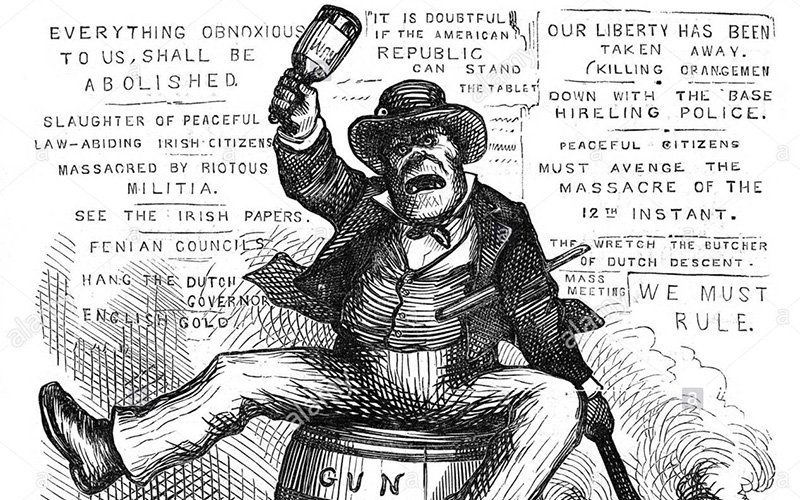
We see this reception of White supremacy by European immigrants in the Irish of America. Irish Catholics who came to this country as an oppressed people, quickly learned that to succeed they had to in turn oppress their closest social class competitors, free Northern blacks. Back home these “native Irish or papists” suffered something very similar to American slavery under English Penal Laws.
The newly arrived Irish-Americans surmised that the best way of being accepted as good and loyal Americans, and to counter the Nativist movement, was to cooperate in the continued oppression of Blacks. Ironically, at the same time they were collaborating with the dominant culture to block abolition, they were garnering support from among Southern, slaveholding democrats for Repeal of the oppressive English Act of the Union back home. There were some that was even convinced that the abolition of slavery was an English plot meant to weaken the US.
This dynamic was powerfully explained by Noel Ignatiev in his work How The Irish Became White, by referencing Mark Twain’s Huckleberry Finn:
The climax of Huck Finn-and perhaps the most intense moment in all of American literature-comes when Huck is forced to choose between doing what respectable society expects of him, writing the letter that will return Jim to his rightful owner, and following another part of his mind. He writes the letter, but before he can send it his mind turns to their trip down the river: “Somehow I couldn’t seem to strike no places to harden me against him, but only the other kind.”
… and then I happened to see that paper.
It was a close place. I took it up, and held it in my hand. I was a trembling, because I’d got to decide, forever, betwixt two things, and I knowed it. I studied a minute, sort of holding my breath, and then says to myself: “All right, then, I’ll go to heII”-and tore it up.
It was awful thoughts and awful words, but they was said. And I let them stay said; and never thought no more about reforming. I shoved the whole thing out of my head, and said I would take up wickedness again, which was in my line, being brung up to it, and the other warn’t. And for a starter I would go to work and steal Jim out of slavery again; and if I could think up anything worse, I would do that, too; because as long as I was in, and in for good, I might as well go the whole hog.
As we know, the Irish in America chose not to go the whole hog, but opted instead for the privileges and burdens of Whiteness.”
Daniel O’Connell, the venerable Irish statesmen – who devoted his life to the emancipation of Ireland – made this plea in 1843 to his Irish American comrades:
Over the broad Atlantic I pour forth my voice, saying, come out of such a land, you Irishmen; or, if you remain, and dare countenance the system of slavery that is supported there, we will recognize you as Irishmen no longer.”
It was a plea, sad to say, that fell upon the deaf ears of the clear majority of the Irish in America. Comradery amongst the poorer and working-class groups of people was foiled, once again, because the call of White supremacy, by and large, drowned out all other calls for unity.
White Supremacy & The Aftermath of the Civil War
There was a brief moment in time, that a fragile coalition appeared between poor/working class Whites and freed-people – many poor Whites were hostile towards the rapacious greed of the traditional White planter elite. This didn’t last long, however, and White supremacy developed incredible social and political power during the closing years of Reconstruction.
When the foundations of Reconstruction began to weaken, planters on the state and local level seized back the initiative, and in South Carolina – where, ironically, the secession from the US began – White conservatives launched an all-out campaign to overturn the Republican state government in 1876.
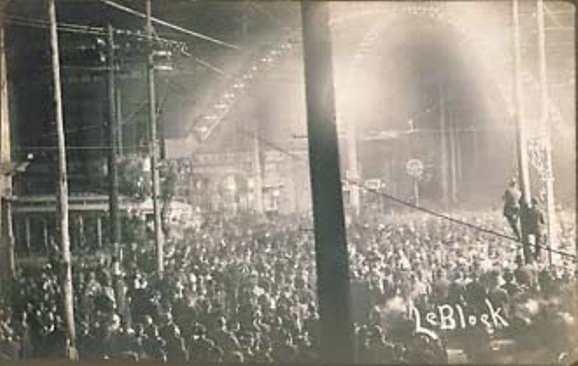
One of their key strategies was to obtain the political support of all Whites, by any means necessary. Once in power, however, White southern elites reversed the Republican policies that had benefited White and black poor farmers. This betrayal eventually led many poor Whites to seek a new political home in Populism, or the People’s Party, away from both the White planter-dominated Democratic Party and the increasingly disgraced Republicans. Nevertheless, still in the embrace of White supremacy.
The sabotage of racial and worker solidarity did not happen by chance. The carrot of Whiteness and White supremacy was dangled by the president who stood in place of the assassinated Abraham Lincoln.
Prior to his assuming the Presidency, Johnson had often expressed his intent to deal harshly with Confederate leaders. Most White Southerners therefore considered Johnson unsympathetic to their region, while Radicals believed that his views were in line with theirs. Both parties would have to greatly modify their perceptions of President Johnson.
On May 1865, with Congress in recess, Johnson announced his own plan to reconstruct the seven remaining Confederate states. This plan was called Presidential Reconstruction. He declared that each of these states—Alabama, Florida, Georgia, Mississippi, North Carolina, South Carolina, and Texas—could be readmitted to the Union if it would meet several conditions. Each state would have to declare its secession illegal, swear allegiance to the Union, and ratify the Thirteenth Amendment, which abolished slavery.
The Radical Republicans were especially upset that Johnson’s plan, like Lincoln’s, failed to address the needs of former slaves in three areas: land, voting rights, and protection under the law. Contrarily, Johnson’s polices relieved most White Southerners. Johnson’s support of states’ rights instead of a strong central government reassured Southern states that they could do as they wished about Black civil liberties and voting rights.
In addition, even though Johnson had promised to punish traitors, he pardoned more than 13,000 former Confederates because he believed that “White men alone must manage the South” and thought that former slaves should not gain the right to vote. Many of those pardoned Confederates, by the way, went on to create and organize the Ku Klux Klan in 1866. As a result, lynchings became the favorite social control over Blacks by White supremacists.
In December of 1865, the newly elected Southern legislators arrived in Washington to take their seats. Fifty-eight of them had previously sat in the Congress of the Confederacy, six had served in the Confederate cabinet and four had fought against the United States as a Confederate general – Johnson had pardoned them all.
There was no massive, nor moderate, pushback, in general, by poor and small land-owning Whites against such a plan to deprive emancipated Blacks of the vote or the protection of law. Manifest Destiny rang in their ears and White supremacy clouded their mental skies. Whatever solidarity or kinship they felt with their comrades of color was abandoned for the unfulfilled promise of a relationship with the wealthy White elite and the long-shot that they, too, could join the upper echelons one day.
A Far Less Than Perfect Union
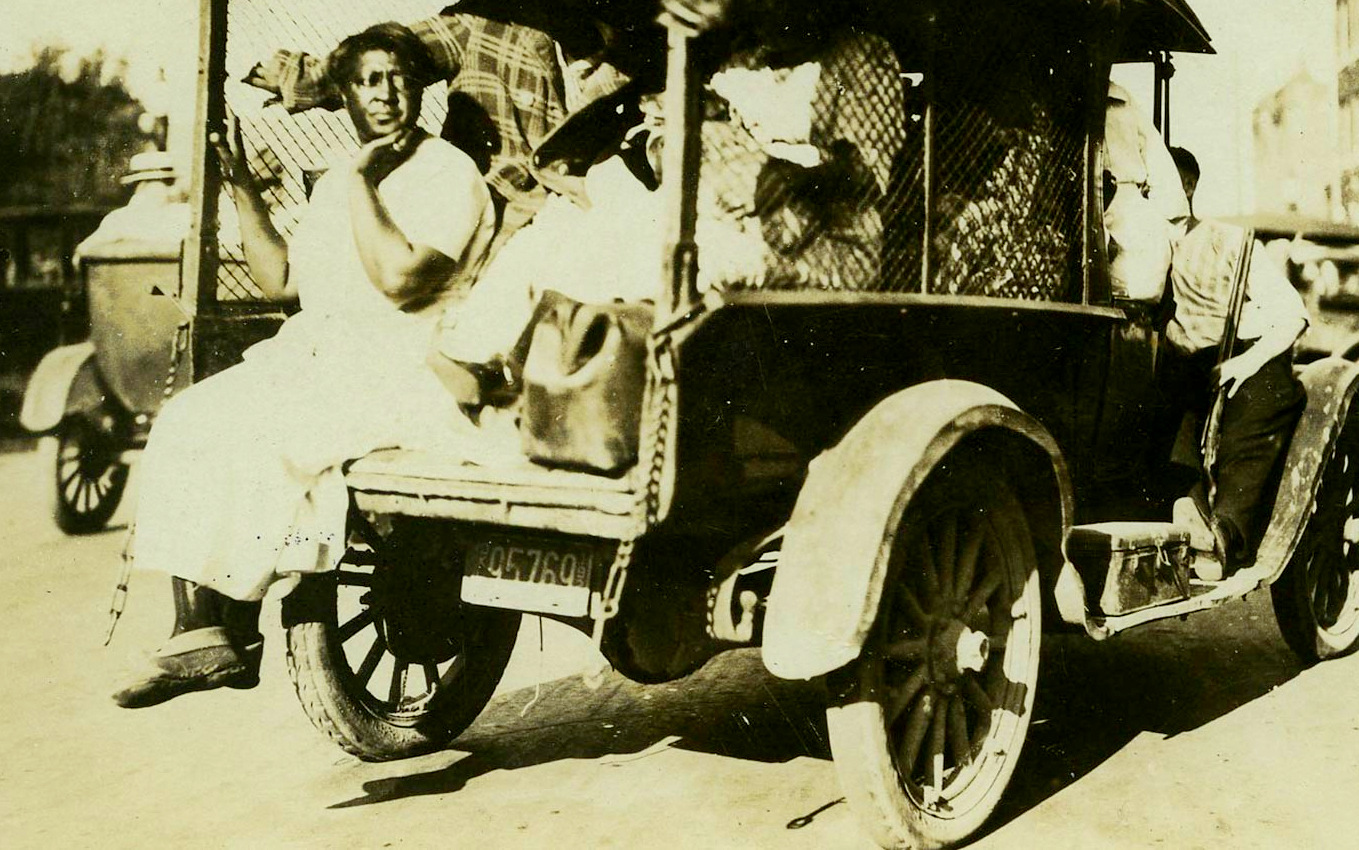
It began some time ago, long before any union was officially formed. Yes, the system of White-skin privileges had not been initiated by the European-American laboring classes, but by the plantation bourgeoisie, the owners of bond-laborers. Nevertheless, as European-Americans found themselves increasingly outdone in their trades by lower-cost slaves – and a proper time of marinating in ruling-class White supremacist dogma – they reacted to this dynamic not by asking for an end to the bondage of their Black brothers and sisters, but by an appeal to preferential treatment based upon Whiteness.
James Hugo Johnston in, Race Relations in Virginia and Miscegenation in the South, posited that slaveholding would end, but the “White race” solidarity would remain the country’s most general form of class collaborationism, by the persistence of the system of racial privileges for “White” workers.
The White planter class established a new system of sharecropping and debt peonage (backed up by the very real threat of the chain gang) to keep black workers on the land. Jim Crow laws guaranteed social and physical segregation from Whites and prevented most Black people from acquiring a decent education, competing for jobs, or building wealth. Lynching became a tool of social control and economic domination – there was usual uptick during the season property owners and sharecroppers settled accounts.
Through the system of White supremacist class control, by 1910, the South once again had become a powerful conservative voting bloc in Congress. And through this power, they consistently blocked labor rights and civil rights for Blacks. The White planter elite would not have been able to cement such power and control, however, without the White poor and middle classes’ loyalty – as a devastating whole – to White supremacy.
Returning to the subject of White supremacy and labor, AFL craft unions were so solidly racist that in 1902, W.E.B. Du Bois found that 43 national unions had no black members, 27 others barred black apprentices, keeping membership to a minimum. Du Bois spoke against both “the practice among employers of importing ignorant Negro-American laborers in emergencies” and “the practice of labor unions of proscribing and boycotting and oppressing thousands of their fellow toilers.”
This arrangement, however, wasn’t because Blacks made it so, it was because of union members and union leaders adherence to White supremacy. Never mind that these policies of unions were self-injurious. By rejecting Black membership and clinging to White-skin privileges, they were creating a group of workers that employers could use to lower wages or to apply pressure during strikes.
DuBois would later lament, that the treatment of Blacks by the White unions had “convinced the American Negro that his greatest enemy is not the employer, but his fellow White workingman”
This attitude was present towards Asian workers in America as well. There was a traditional hostility of the AFL leaders to immigration—particularly Asian immigration—nurtured an absolute racist ideology. At the 1901 convention of the AFL, the Resolutions Committee decried the Chinese as “people of vice and sexual immorality” who were of “inferior social standards.”
Throughout president Samuel Gompers period, the AFL continued to uphold a racist position. In 1914, it demanded that “all races native to Asia” be excluded permanently from the United States, declaring that “the racial incompatibility as between the peoples of the Orient and the United States presents a problem of race preservation which . . . can only be effectively solved by a policy of exclusion.”
Gompers, also opined that the “Chinese as a race are cruel and treacherous.” In his memoir, Seventy Years of Life and Labor, Gompers later expressed his belief in “the principle that maintenance of the nation depended upon maintenance of racial purity.”
Gompers racism wasn’t restricted to the Chinese however. He also criticized Blacks for allowing themselves to be used by employers as “cheap men.” He urged Blacks to “form colored workers’ unions”; the AFL, he wrote, “does not necessarily proclaim that the social barriers which exist between the Whites and the Blacks could be or should be obliterated. . .” And he warned that “if the colored man continues to lend himself to the work of tearing down what the White man has built up, a race hatred far worse than any ever known will result. Caucasian civilization will serve notice that its uplifting process is not to be interfered with in any way.”
The AFL could have avoided this conflict, by the way, by organizing Black and White workers together. It’s not if these circumstances were inevitable or immutable. The Knights of Labor and the International Workers of the World was able to, at the time, organize Black and White workers together, in the North and in the South. Not satisfied with merely excluding Black workers from their union however, the AFL attacked the organizing activities of the Knights of Labor among those same workers.
After the transcontinental railroad was completed in 1869, competition for jobs increased. Many organized labor groups first blamed Chinese, then Japanese immigrants for unemployment and low wages. One of the most pronounced goals of these labor groups, was complete job exclusion of those of Japanese ancestry. They lobbied for anti-Japanese legislation, conducted boycotts, promoted segregation, and produced propaganda. They pressured Congress to keep Japanese people out of agriculture and other industries and held anti-Japanese rallies and worked to restrict employment of Japanese Americans.
Due to the Jim Crow laws of the South, there were many Black southern craftsmen who would travel to perform their skills. Many would go to places like New York, Philadelphia, Detroit, etc. and would out compete local White contractors who could not perform as well as they did and could not settle for their affordable pricing.
In response to this, construction unions in the North were formed to block out Black crews from coming into communities and providing a better service for a cheaper price. Some may say that’s exactly what a union is supposed to do, protect their workers. While this is true, why wasn’t the first response to invite Blacks into the union? Where was the drive for worker solidarity? Any honest person knew that Blacks were only up North because the Whites in the South had frozen them out of employment opportunities. Further, they knew that Blacks had little to no political clout in the North without the backing of a union.
In 1931, we see the passage of the Davis-Bacon Act. This act set uparbitrary labor wage scales so that Black craftsmen could no longer undercut White craftsmen. They all had to be paid a certain price, a principal wage at a minimum – this effectively killed competition. Once again, one can rightfully argue this is exactly what a union is supposed to do in ensuring the best possible wage for it’s members.Yet, membership was not extended to Blacks and Whites achieved this end by the means of naked racism and a not-so veiled appeal to Whiteness.
Herbert Hill observed in a 1959 essay for Commentary, “…today, as in the past, there is a profound disparity between the public image presented by the national AFL-CIO, with its professed devotion to racial equality, and the day-today experience of many Negro workers, in the North as well as the South, with individual unions. To be sure, there are important exceptions, particularly in the mass-production industries, where a large concentration of Negro workers actually preceded unionization. Such unions as the United Automobile Workers, the United Packinghouse Workers, and the Rubber Workers Union have conscientiously worked to eradicate institutionalized job bias.”
“Nevertheless, the Negro is discriminated against by unions in major areas of the economy—including the building and construction trades (International Brotherhood of Electrical Workers, Plumbers Union, Carpenters Union, Operating Engineers, etc.), the railroad industry (the four “operating” railroad brotherhoods, and the Brotherhood of Railway and Steamship Clerks), the metal crafts (the Boilermakers, Iron Ship Builders Union, etc.), and pulp and paper manufacturing (Pulp, Sulphite, and Paper Mill Workers Union, United Papermakers and Paper-workers Union). In these and other industries, trade unions practice either total exclusion of the Negro, segregation (in the form of “Jim Crow” locals, or “auxiliaries”), or enforce separate, racial seniority lines Which limit Negro employment to menial and unskilled classifications.”
Long prescribed by White leftists, communists and socialists as the remedy for racial solidarity among workers – the union – was, and in some cases continues to be, one the greatest impediments to that bond. From the early 2000s to the early 2010s, there was over 4,200 complaints filed against unions for racial discrimination with the Equal Employment Opportunities Commission (EEOC).
White Violence’s Enforcement of White Supremacy
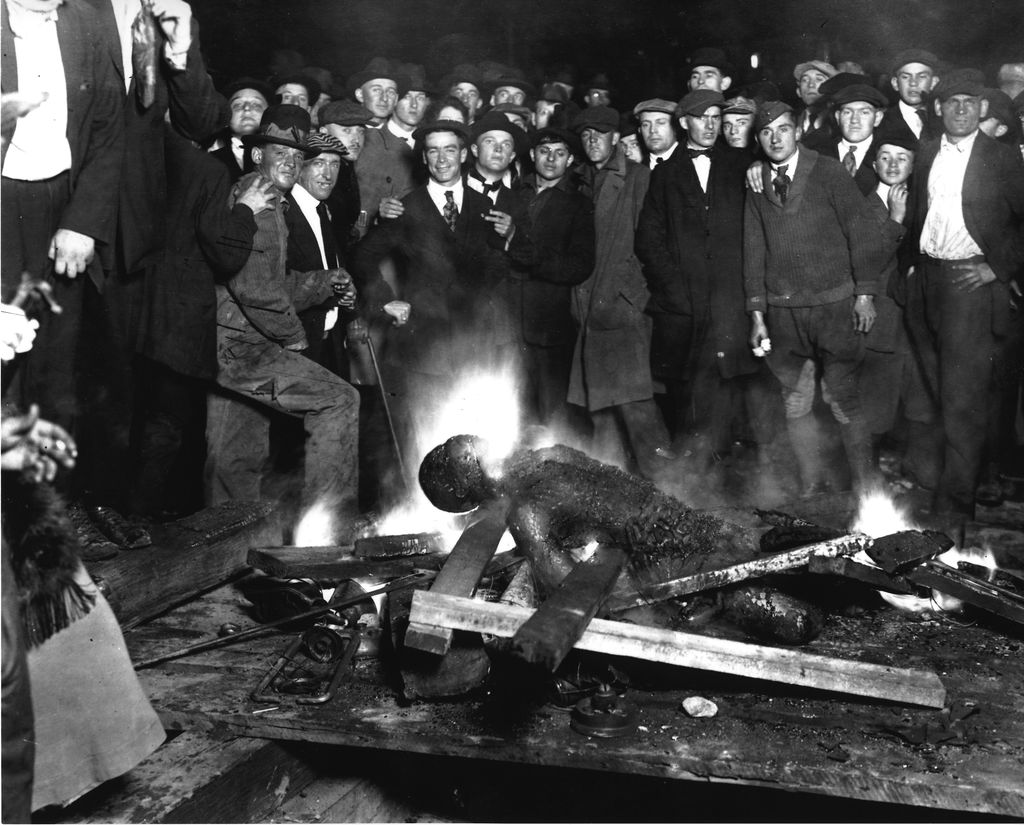
The curious thing about this current championing of White supremacists by so-called leftist Whites in the wake of the violence in Charlottesville and Berkeley, is that, historically, one the most prominent features of White supremacy is violence – some may argue that it’s THE most prominent.
Throughout their bloody history, factions of the Ku Klux Klan, Skinheads, Neo-Nazis etc, have used acts of terrorism—including murder, lynching, arson, rape, and bombing—to oppose the granting of civil rights to Jews, other people of color but, in particular, Blacks.
Let’s not forget the violence of First Nation land theft and genocide; the violence of slavery; the violence of war to protect the White supremacist status quo; the violence when Black success –and that of other groups of color – rivals or exceeds that of Whites (as in Black Wall Street, theft of Japanese businesses during WWII); the violence of White mobs against workers of color, etc. All based on, and at the behest of, White supremacy.
A prime example of this violence was in 1910. Although he became the heavyweight champion in 1908, it was Jack Johnson’s defeat of the Great White Hope and former heavyweight champion Jim Jeffries that caused violent White hostility. In more than twenty-five states and fifty cities – including New York, Atlanta Philadelphia, Pittsburgh, St. Louis – Whites mobs attacked jubilant Blacks in revenge… lynchings included. The heavyweight title was long looked upon as the ultimate symbol of masculinity, and up until Johnson, that masculinity was White. How frail and vain White supremacy must be to react in this way to a sporting event… a sporting event.
Nevertheless, no matter how long this list is, the faux-leftist apologists for White supremacy have revived the old racist meme that has been used as the rationale to kill civil rights workers registering people to vote (Black and White); for the lynching of Blacks wearing military uniforms; for the beating of Freedom Riders (Black and White) trying to achieve equality in the US transportation systems… they “provoked” the violence against them by White supremacists. This is the company that individuals such as Chris Hedges, finds himself, knowingly or unknowingly, in.
The twisted irony of law enforcement’s disdain for groups like Black Lives Matter – and seem fond of bellowing the illegitimate claim that they endanger the lives of police officers – is that it’s White supremacist groups, above and beyond, that are the chief purveyors of extremist violence against police.
Among domestic extremist movements active in the United States, White supremacists are by far the most violent, committing about 83% of the extremist-related murders in the United States in the past 10 years and being involved in about 52% of the shootouts between extremists and police.
Between 2009 and 2015, the Anti Defamation League identified 54 separate shooting incidents between police and extremists (of any sort) in the United States. The bulk of these involve full-fledged shootouts between police and extremists. There are also a few incidents in which extremists fired at police but police did not need to return fire to apprehend them, as well as a few incidents in which extremists tried to fire at police or threatened them in some other way and were then shot by police. Of these 54 incidents, 28, involved White supremacists.
What makes this law enforcement and White supremacist relationship infinitely more complex and troublesome, is the historical and current infiltration by White supremacy groups into police and sheriff departments around the country. Law enforcement has long been the arm of White supremacist power in perpetuating violence against various communities of color – and the Black community in particular.
In a previous piece, by this writer, the earliest incarnations of this alliance was pointed out:
This narrative of law enforcement’s hostility toward and over-policing of the black community is a dynamic that goes back further than the founding of this nation itself. As far back as 1671, South Carolina had put together a watch group consisting of regular constables and citizen volunteers to guard Charles Town against potential problems — “problems” that included slave gatherings. In the 1700s, South Carolina established slave patrols meant to control and police slaves. By 1785, South Carolina had integrated the slave patrols into the Charleston Guard and Watch. Some consider this the first modern police department, as this force was authorized by Charleston to use force, had enforcement responsibilities, was the city’s primary law enforcement agency, and had an established chain of command.
A selective, as well as collective, amnesia has taken hold of Whites in America when it comes to the racism and White supremacist ties to law enforcement. The murders of civil rights workers; the lynchings of Black people throughout the South; the sabotage and harassment of organizations that fought for the human rights of people of color etc, have all taken place with US law enforcement acting as the Praetorian guard of the American White Supremacist Empire.
COINTELPRO notwithstanding, the FBI released a report in 2006, that this saturation of law enforcement by White supremacist groups was taking place. The FBI outlined the danger of White nationalists and supremacists permeating the ranks of police to disrupt investigations against other members and recruit more supremacists. This report was written during a time of an outing of many law enforcement agencies throughout the country, which included a neo-Nazi gang formed by members of the Los Angeles County Sheriff’s Department that profiled and brutalized Black & Latino populations. Other investigations exposed officers and entire departments with White supremacist ties in Illinois, Ohio and Texas.
And no, for those who are wondering, nothing was done by the FBI or law enforcement – at the state and local levels – to create systems that could establish links to personnel and White supremacist groups. This is eerily similar to the 2009 Department of Homeland Security report, that was buried by the US government, that pointed out the rise of right-wing extremist groups (which included White supremacist groups). Not only was the report ignored, after a conservative and White backlash, but the group that wrote the report and was tasked with trafficking the most dangerous extremism in the US – White supremacist/right-wing extremism – was whittled down to one, lonely analyst.
The credence of this paradigm is strengthened in The FBI: A History, by Rhodri Jeffreys-Jones where he states that FBI records showed that 85% of COINTELPRO resources targeted groups and individuals that the FBI deemed “subversive,” including communist and socialist organizations; organizations and individuals associated with the Civil Rights Movement, anti-war & anti-imperialist groups.” In other words, left-leaning and leftists groups. The “remaining 15% of COINTELPRO resources were expended to marginalize and subvert White [supremacist] groups.”
So, it’s not difficult to see how reports, of possible White supremacist violence, were ignored by Charlottesville police before the protest or, for that matter, for the same police department to be unmoved when shots were fired by a White supremacist during the protest. Police and sheriff departments, especially in the South, have a long and infamous tradition of just standing by (or actively participating), when the civil & human rights of those who are fighting for justice, are violated. No, ladies and gentleman, Bull Connor was, and is, not an anomaly.
Nevertheless, when White supremacists behave like White supremacists have consistently behaved for centuries, we’re to believe it was some well-orchestrated, George Soros initiated conspiracy? In their 400-year history in this country, White supremacists have needed no provocation, whatsoever, to be violent. The moral gymnastics that are taking place to divorce Charlottesville and Berkeley from that long laundry list of infractions; and to present those events that have taken place recently, in some history and context-free vacuum, is the problem.
Violence has always been on the menu when that supremacy feels threatened.
Trump & White Supremacy
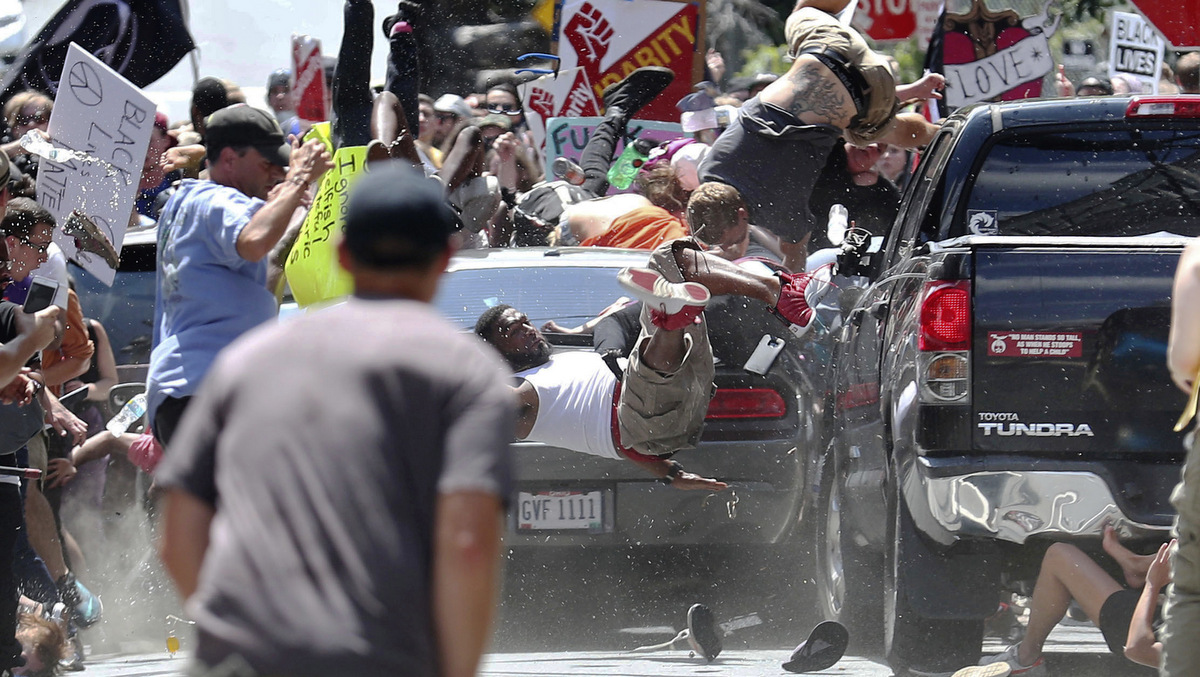
If one is familiar with what actual racism and White supremacy is, then it cannot, honestly, be argued that the Trump campaign engaged in those phenomena heavy and often. And yet, Trump’s entry onto the current political stage was not his campaign for the presidency of the United States, but rather the standard-bearer for the racist, White supremacist birther movement. Yes, his coup de grace was to provoke the first Black president into releasing the long-firm version his birth certificate. There were, essentially, no political, social or moral consequences for such a craven and racist act. On the contrary, in the right-wing and White supremacist world, he was king.
Now, let’s pivot to his ultimate election as president and his subsequent presidency. As much as it’s been contended otherwise by White leftists and Trump supporters, White racism did play a fundamental role in his election as president. The 2016 American National Election Survey (ANES) points out that the main driver of White Trump voters in this election was not economic anxiety, as many White leftists try to intimate, but rather White consciousness and racial animus.
Racial attitudes towards blacks and immigration were the key factors associated with support for Trump. The survey surmised that both racial resentment and black influence animosity were significant predictors of Trump support among White respondents – independent of partisanship, ideology, education levels, and other factors.
What the results indicated was a probability of Trump support higher than 60 percent for an otherwise typical White voter who scores at the highest levels on either anti-Black racial resentment or anti-Black influence animosity. That’s less than the 30 percent chance for a typical White voter with below average scores on either of the two measures anti-Black attitudes. Further, when a White respondent was at the lowest levels of racial animus, Trump had an approximately 10 percent likelihood of getting that person’s vote.
As DACA has recently captured the headlines and our attention, the next piece of information is extremely salient. Anti-immigration attitudes for White people even out-distanced anti-Black attitudes. The results showed about an 80 percent probability of voting for Trump for an otherwise average White person with the most anti-immigrant attitudes, compared to less than 20 percent for a White person with the most favorable attitudes towards immigrants.
So, with all things considered, the impact of each of the three dynamics—racial resentment, black influence animosity, and immigration attitudes — Trump’s appeals to racism and the racist attitudes of many White voters – worked together to make Donald Trump President of the United States.
The survey also revealed that economic anxiety was much higher amongst Blacks and Latinos than it was for Whites. Which begs the question in light of all the “protests” by White supremacist groups; the drive by White supremacists to gain a higher platform and profile in the aftermath of the Trump election… if economic anxiety and anti-war sentiment were the things that most White Trump voters cared about, then why no anti-war protests or jobs rallies by these groups of people? Has there been any organized – en masse – events, such as these, by White Trump supporters?
They’re gatherings – and it can be heard in their rhetoric – has been about a regaining of White hegemony thought to be lost after the election of Barack Obama. Racism may not have been the only reason, but it was the prevailing reason in Trump’s election, among the Whites that voted for him.
Conclusion
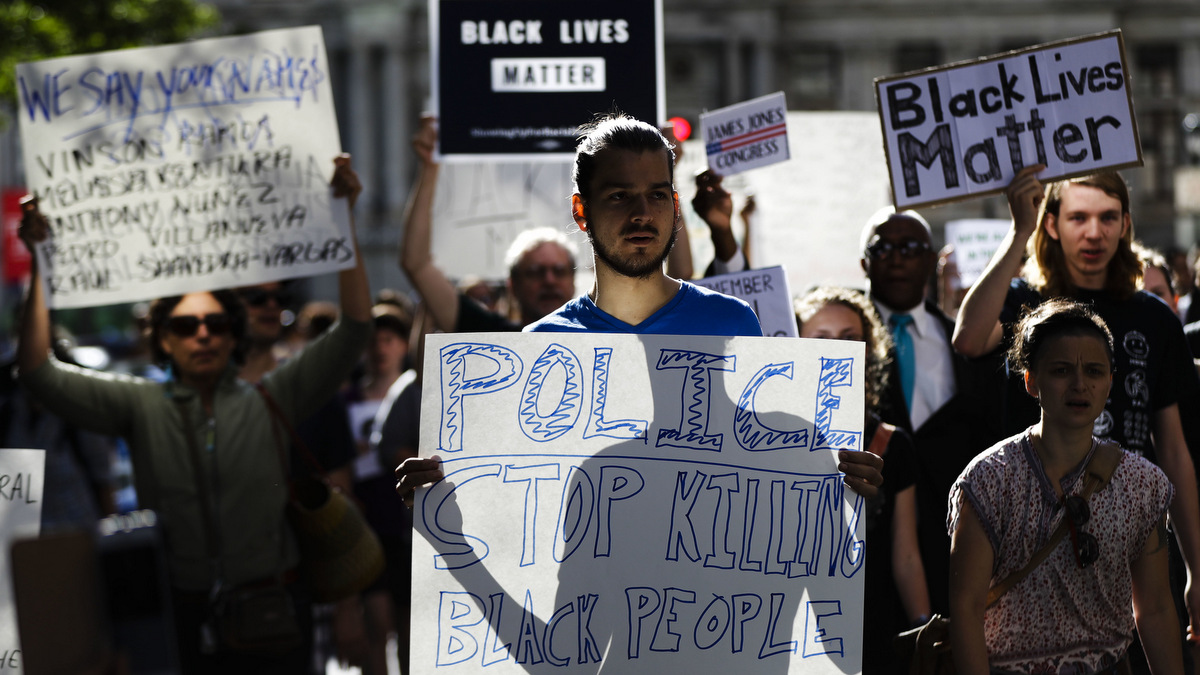
The testimony of history is unimpeachable; the statistical evidence… unassailable. Those who cling to Whiteness & White supremacy stand exposed as conspirators – either by their silence & apathy or by their active participation in the oppression of their brothers and sisters of color. Once again, stop trying to make this about us, it never was. The “distraction,” that’s being ignored, is White supremacy is the greatest and most enduring obstacle to racial and class solidarity.
Theodore Allen explained it in this way: the “White race is an all-class association of European Americans held together by ‘racial’ privileges conferred to laboring class European Americans relative to Blacks. It is the most basic, most prevalent and historic form of class collaborationism in this country.”
Allen further suggested that there were three key crises, that forwards the above point. “(In) three periods of national crisis [Civil War and Reconstruction, Populist Revolt of 1890s, and the Great Depression of the 1930s] characterized by general confrontations between capital and urban and rural laboring classes . . . The key to the defeat of the forces of democracy, labor and socialism was in each case achieved by ruling-class appeals to White supremacism, basically by fostering White-skin privileges of laboring-class European-Americans.”
And throughout history, one by one, each European-immigrant group was extended, and accepted, the invitation to Whiteness. That membership gave certain privileges, from minor to major, but it also came with certain responsibilities. Central to those responsibilities was, and is, the maintenance of White supremacy and, once again, those responsibilities run from the minor to the major.
The ever popular, “my ancestors didn’t own slaves,” retort is – more times than not – a feeble deflection from addressing White supremacy. The institution of slavery worked through the cooperation of a Northern White capitalist elite that depended on the work of Black slaves to make money from the crops they gathered; the White overseer who brutalized, tortured and “broke slaves in;” the White slave patrols; the Whites who actively participated in the oppression of Black people and the Whites who accepted and bought into the White supremacist social control construct; that adhered to the Black codes and the belief – to varying degrees – regarding the, supposed, inherent inferiority of Blacks and indigenous peoples. It took ALL of that to make slavery and racial discrimination work.
I will not stand by as you try and make Black people, and other people of color, the detour from the conversation that you should be having with one another. Those who engage in such racist condescension are even blind to the fact that their belief that they get to tell Black people how they should respond to what is disproportionately happening to them, is the height of White supremacy. This has to be understood about White supremacist ideology: it seeks to force its targets to justify their rightful, righteous indignation, instead of compelling its adherents to renounce their blind – conscious and unconscious – allegiance to this social class control construct.
Whiteness, nevertheless, proves to be – repeatedly – far too seductive a narcotic to resist. It is Whites who have, overwhelmingly, prized White supremacy and Whiteness over class and ethnic solidarity again and again and again. White “allies” who rationalize White racism and heaps condemnation on those who call it, just that, racism, sound like segregationists back in the day who blamed the violence of White mobs on “niggras agitatin em.”
Many have tried to accuse me of divisiveness. Well, if they’re saying that divisiveness is me not ignoring what is disproportionately happening to Black people, then yes, I’m guilty as charged. For this I do not ask for permission, nor do I make any apologies. Isn’t it curious, however, that those who have have laid the “divisive” label at my feet and at others, find themselves being apologists for those, who by definition, embrace divisiveness… White supremacists and Neo-Nazis?
When your outrage is aimed at our reaction to very real racism, and not the racism we are reacting to, you lose any credibility with us as an honest participant in this dialogue. Further proving that this aint about us.
No matter your view of the organization, show us the pictures of an outdoors Nation of Islam rally where there’s a White person hanging from a tree; show us the union run by people of color that talked – and talks – about success in terms of exclusion of White people.
Show us the crowds of Black people, with children in tow, terrorizing buses full of White children just trying to go to school. Finally, show us the footage of a White child being escorted into a school by federal troops or US Marshalls, through crowds of hate-filled and hostile Black people, JUST to get an education.
I refuse to engage in a toxic false equivalency for the sake of a dishonest appearance of unity. It appears to be a clamor, like no other, when Black people talk about what is happening to them AS Black people. To ignore racism’s and White supremacy’s role in the formation and construction of this country and society, is tantamount to societal treason.
Imagine, if you will, that you are visiting the home where you grew up. Your mother and father (some of us may not share this experience, but imagine it just the same) greet you at the door and you walk through a corridor where the walls are full of plaques and framed certificates highlighting the achievements of your siblings. Your sister’s perfect attendance award; the brother’s 2nd place plaque for the 5th grade spelling bee…. Achievement after achievement, but none of yours are there.
You go into a room that is full of the trophies. Your sister’s trophy for winning the softball championship; your brother’s Most Valuable Player trophy for football…. Accomplishment after accomplishment, but none of your trophies are there. Finally, you take a look at the photo albums. Your brother’s first step; your eldest brother’s prom; your younger sister’s wedding…. Picture after picture and memory after memory, but none of your pictures or memories can be found.
The question which must be asked is this: no matter how vehemently your parents insisted that you did, would you feel like you belonged to that family? I don’t think I am being too presumptuous when I say the overwhelming majority of us would answer that question in the negative. And yet, according to many White leftists, that desire to see your plaques, your trophies and your pictures is nothing more than an exercise in identity politics
We are told that by wanting the full expression of our humanity in a society that has fed us a steady diet of inferiority and humiliation for centuries, that, somehow, we’re divorcing ourselves from this imaginary large-scale union. A unity, mind you, that seems to be taking residence, only, in the delusions of these insistent White people. These so-called leftists completely ignore that it’s relatively easy to not to have to focus on identity when your prescribed identity is over-represented in the halls of power; in a society’s institutions and systems.
I asked this question, a little while ago, that has yet to be answered. If one believes that the mention of racism in the context of Blacks (and other people of color), is a divide-and-conquer strategy devised by the elites, name a time in this country’s history that Blacks sided with the elites to oppress Whites?
And yet, to further add insult to injury – in this betrayal – many Whites on the left, have taken up the nasty business of late, of defending characters such as Robert E. Lee. Saying things like, “he freed his slaves” when, in actuality, they were ordered freed in the will of his wife’s benefactor that she was once the ward of… George Washington. As a matter of fact, Lee went to court to petition keeping the slaves. He lost.
These same so-called leftists, not willing to surrender to facts or history, have gone on to say that the Civil War wasn’t about slavery. Even though the documents of every state that seceded pointed to the “threat” to the institution of slavery as being the foremost reason for leaving the Union. Further, when a month AFTER Lincoln – although racist, was an abolitionist – was elected, South Carolina seceded from the Union. And a month BEFORE Lincoln was inaugurated, the Confederate States of America was established, how does one have the audacity to say it had nothing to do with slavery?
This is the “unity” that Blacks are invited to. Where the unacknowledged and unchallenged White supremacy of our “leftists” White brothers and sisters causes them to take a sandblaster to our history – and the actual history of this country. A “unity” that calls our addressing of our disproportionate pain, poverty and problems, “distractions” from the REAL conversations that need to take place.
Understand this: your conversations don’t need to take place on the Facebook pages of people of color or on Black people’s Twitter feeds. We don’t desire your hushes of Black protest nor do we need your uninvited disapproval of the voice we give to our frustration and to our grief. No. Those conversations need to be had with your husbands and wives; your mothers and fathers; your brothers and sisters; your friends and loved ones. This aint about us no matter how much your moral cowardice tries to make it about us. White supremacy did not begin by coincidence, and it will not be undone by accident. That which was intentionally produced, must be deliberately eradicated.
Centuries have passed; generations oppressed and peoples demoralized. Either the White middle, poor and working-class will turn their backs on White supremacy and join their sisters & brothers of color in the resistance to the racist stranglehold of the predominantly-White oligarchy and elite or they will continue to be the obstacle to true racial and class solidarity. Whatever the choice, it’s up to them and it aint about us.
Top photo | White nationalist demonstrators walk through town after their rally was declared illegal near Lee Park in Charlottesville, Va., Aug. 12, 2017. (AP/Steve Helber)


